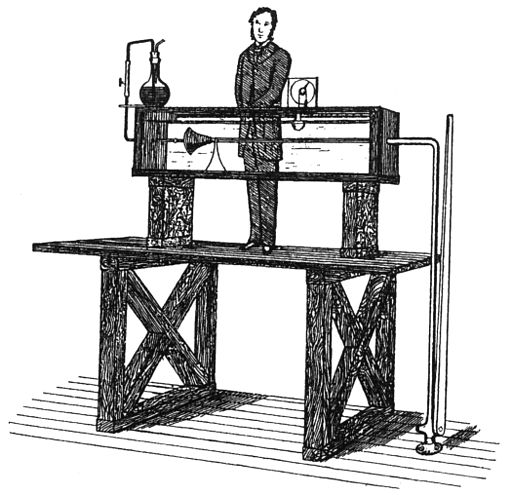
October 2014: The Founding Fathers of CFD
The theory on which Computational Fluid Dynamics (CFD) depends was laid way back in the 19th Century, before the dawn of practical computers. Take a moment to marvel at some of the science pioneers armed only with pens and paper who enabled CFD to become an essential engineering tool used today by a wide swath of industries.
 Reynolds' Pipe ExperimentBy Osborne Reynolds (Scan from book (lost)) [Public domain]
Reynolds' Pipe ExperimentBy Osborne Reynolds (Scan from book (lost)) [Public domain]
Osborne Reynolds: A Giant in Fluid Dynamics
If you have performed simulations with industrial CFD and thereby solved the Reynolds-Averaged Navier-Stokes (RANS) equations, or if you have compared scaled fluid dynamic experiments with their full size counterparts using the Reynolds Number, then you have benefited from the groundbreaking work of Osborne Reynolds (1842 - 1912). Read more >>
Ludwig Prandtl: Real Fluids Explained
Prior to Ludwig Prandtl (1875 - 1953), analytic analysis of fluids with an early form of CFD, confined to paper and pencil, assumed ideal inviscid potential flow. However, this approach was less than ideal at predicting drag (d'Alembert's paradox) and airfoil stall, which was a pressing problem for engineers at the dawn of powered heavier-than-air flight. Prandtl developed practical theories for real fluids that found favor with aircraft designers. Also, like Osborne Reynolds before him, Prandtl had a non-dimensional number, the Prandtl Number, named after him. Read more >>
A Case for Renaming the Navier-Stokes Equations
You probably know that the Navier-Stokes (NS) equations are named after Claude-Louis Navier and George Gabriel Stokes. Navier come up with the first original derivation based on discrete molecular interactions (discrete approach) and Stokes originated the assumption of a continuum directly using viscosity that is the widely referenced approach still taught today. However, between these two approaches there were other derivations, a continuum of sorts, attributed to other luminaries of 19th Century science. Read more >>
